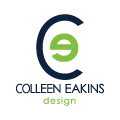What’s the Real Difference between Branding and Marketing?
As a business owner, there are two important concepts that should be identified when creating your overarching plan – branding and marketing.
At first glance of the words, they seem like they could be interchangeable. But, as we take a deeper dive in to each, you may possibly need to adjust your strategic plans.
Branding: Building an Identity
Let’s think of branding as the cohesive glue that holds your marketing campaigns together. It is the core of the business and who it is, represents and values. This can encompass:
- mission statement
- company culture
- reputation of business
- loyalty of customers
Branding will also include a detailed use of your business’ design standards – such as:
Logo format
A few components are wrapped up in to this piece. Determining if the logo needs to be in color versus black white is a first step. Is it more vertical or horizontal? Do you need multiple versions to fit different types of collateral?
Logo use
Where will the logo be primarily placed? When placed with other logos, is there an order of hierarchy? Will it require specific size requirements pending placement? If this is being used within a footer of an email, what is the smallest size the logo will be allowed to be at?
Color palette
Choosing the main colors for the logo is very important, as this will need to adhere to the overall brand strategy and represent the company correctly. There also needs to be thought on what other colors can be used if the marketing material clashes too much with the main logo. How else can this be represented?
Fonts
In tandem with choosing your colors for the company and logo, the font chosen to be used in the logo will be as important. This will be the main representation of the company. Making sure it’s how the brand should be portrayed, it’s legible, and clear to the consumer is key. Also including in the brand standards similar fonts that can be used when speaking about the company will be beneficial when used on different materials.
The above items are pieces that a professional designer can help build out that supports and easily conveys your company’s mission and goals. From initial meetings for the designer to understand what the company does to deeper discussions about how the company should be portrayed – both elements fall under the building company’s brand identity.
You should be very detailed in how you express the needs of what the brand guidelines should entail. This will allow you to deepen the relationship between the different pieces of your company and why you are, who you are.
Long-term visions of the company should be included your brand identity. Without this aspect determined when building your business, you can’t fully understand what the business should accomplish and how those goals will be reached. You want to stay true to why the company was formed in the first place.
Marketing: Executing Your Brand
This is the marketing piece and how you execute the mission and vision of your brand. This will be ever changing and evolve as your products and services change, but will always refer back to core identity of the company.
Examples of marketing efforts to promote certain products or services are:
Print campaigns
This includes newspaper, brochures, postcards, catalogs, posters, banners, etc. Though digital marketing efforts are extremely effective and cost efficient, print is still a main and valuable aspect of business operations.
Radio
This will not include any visual creative, but the tone and message for a radio ad still must reflect the brand’s strategy in how it wishes to present itself to potential consumers. Note: different markets are more expensive than others and will depend on the station for the demographic you would like to reach.
Television
This form of marketing will be the most expensive. Not only will there production costs (location, actors, shooting, etc.), but there are also the costs of the actual advertising spot (differing per station and market). However, this can be very effective to reach a wide audience and to be able to use visual and emotional cues combined.
Digital Efforts
The following marketing tactics have not only become the workhorse of current marketing strategies, but also the most cost effective – they include: mobile, social media, search engine optimization (seo), email blasts, content marketing (blogs, videos, etc.).
Overall, marketing can be thought of as in what’s “in-season” and broken up in to campaigns – trends and channels that will help dictate how your message is delivered and to what audience, all while referencing and adhering to your brand standards.
Which One Comes First?
Now that the two pieces have been hashed out, which one do you start with?
The brand should always be thought of first and then incorporated in to how a certain marketing tactic can be best used to solicit and engage current and potential consumers.
Where the Two Should Meet
Branding and marketing have been broken up above, but that doesn’t mean that they do not ever work together. There are two areas on where the brand and marketing overlap: the company voice and imagery presented.
When developing your brand, you should have a specific tone to the company and target audience in which your products and services may be best suited for. Not only does this impact what you wish to offer to the market, but how your mission and culture are influenced. An ivy-league school operates and speaks differently than how a tech start-up will. There is no one way that is better than the other, but needs to be carefully determined to help structure how the organization speaks to its consumers and even their employees.
The other area where the two practices meet is when you determine what imagery, colors, etc. you will use. As mentioned earlier, this can be done with the help of a professional designer that will help guide the thought process to determine your logo and colors, but when executing different marketing campaigns, it is important that those are adhered to and any other selected images represent the company in the best light and in-line with the set brand guidelines.
When determining your brand and marketing efforts, contact Colleen Eakins Design to set up a consultation to learn how we can best support you.

I received my Bachelors in Marketing and Certification in the Pastry Arts. I have managed a wide array of printed and digital marketing needs.


 ©2018, Colleen Eakins Design
©2018, Colleen Eakins Design
 ©2018, Colleen Eakins Design
©2018, Colleen Eakins Design